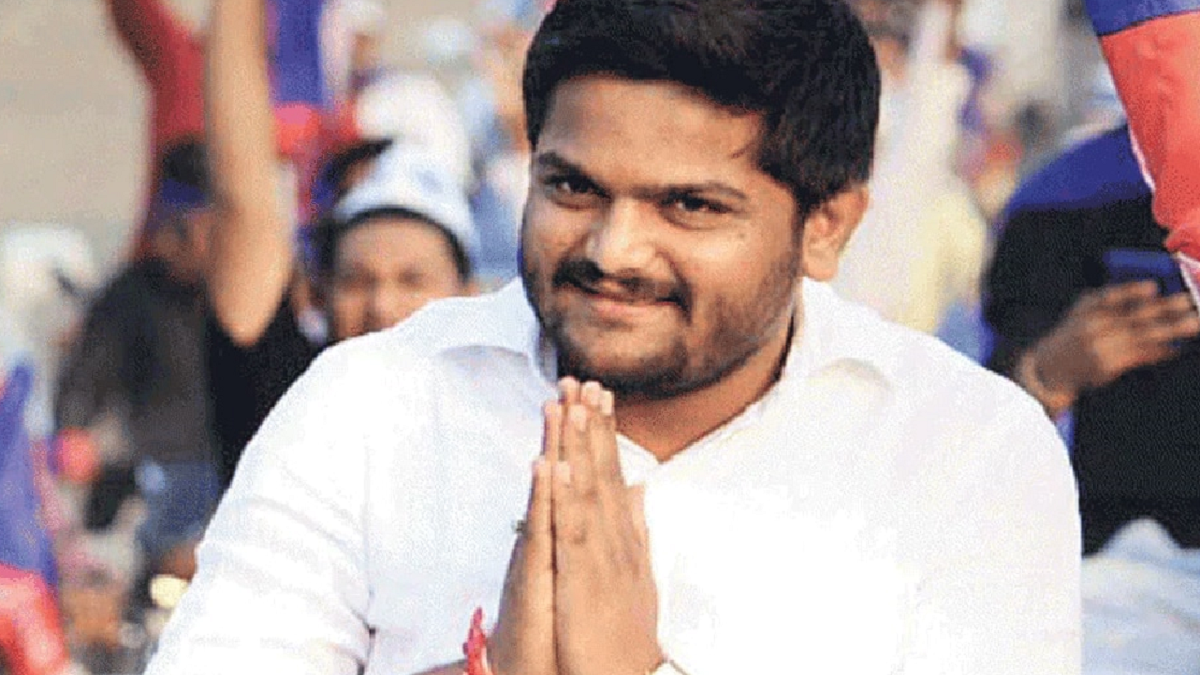


Once the face of Patidar reservation movement in Gujarat, Hardik Patel, who joined the Congress just before 2019 national elections, has now been appointed the acting president of the party. The important and interesting point is that it seems he has been elevated to this position keeping in mind the upcoming by-elections (October-November) for eight Assembly seats in the state. The Congress believes that his appointment will help the party get Patidar votes in the state. Many consider this a masterstroke, but the real question here is whether this move will benefit the party in Gujarat or not. Will Hardik be able to attract the Patidars and the youth? To analyse this one needs to understand the impact on electoral politics of the community and history of association of Patidar with Congress in the state.
The Patidar community has a dominant role in politics of Gujarat. This becomes clear If one analyses the influence of the Patidars on the Assembly seats in three out of four regions of the state; there are total of 54 seats in the Saurashtra-Kutch region in which the Patidars are dominant in 22 seats; out of a total of 68 seats in Central Gujarat they are dominant in 15; and, in North Gujarat they decide the electoral outcome of 12 out of 32 seats.
Gujarat has a total of 26 Lok Sabha constituencies. Of these 26 seats, the Patidars play a decisive role in around 12 seats. There percentage of votes in these 12 seats is as follows: Ahmedabad East 14.5%, Amreli 16.41%, Gandhinagar 17.40%, Anand 15.26%, Kheda 11.33%, Bharuch 17.75%, Mehsana 29.93%, Navsari 23.3%, Surendranagar 20.22%, Surat 24.70%, Valsad 28.5%, and Vadodara 11.1%.
Why will the Congress’ Hardik move actually backfire? The answer to this question lies in the fact that the Patidars suffered lot of hardships in the early 1980s under the Congress rule in the state. To curtail the dominance of the Patidar community in electoral politics of state, the Congress under leadership of Madhava Singh Solanki adopted the “KHAM” principle to unite other castes against the Patidars. Acronym KHAM stood for “K” meaning Kshatriya, “H” meaning Harijan, “A” meaning Adivasi (tribals) and “M” meaning Muslim. This led to fierce confrontation between the Patidars and other communities, especially Thakors. Riots erupted in several villages, in which many lives were lost. The Solanki government gave the police orders to curb the agitation at any cost. The police opened fire, which is said to have killed at least 100 people. It was widely believed then that the Solanki government was strict on the Patidars and soft on other castes. There were also incidents of looting and assault in several Patidar homes.
The wedge got further widened when before the state Assembly elections of 1985 Solanki, realising the anger among the Patidars for him and his government, following the Bakshi Commission report, which actually recommended 18% reservation for the economically and socially backward castes in the state, increased the reservation to 28% without any demand from any community to garner the support of OBCs for state elections to be held in March-April 1985. This decision was opposed by the non-reserved castes of the state, including the Patidars. However, Solanki won 149 seats out of 182 seats in the Assembly elections, which is the record till date in Gujarat. The Congress won the elections but lost the Patidars forever. After this, Patidars never supported the Congress and the party was wiped out in Gujarat.
No doubt, when Hardik Patel started the Patidar reservation movement and emerged as the face Patidar movement in the state, it was the BJP’s turn to face the electoral heat as a result the BJP bore the brunt in the civic elections. At one time, it seemed the Patidar society was willing to follow Hardik Patel whole-heartedly and make a new beginning under his leadership. But the moment Hardik joined the Congress, the Patidars started getting away from him; this was evident during the 2017 Gujarat Assembly elections.
In 2019, the Congress nominated Patidar candidates in eight seats namely Rajkot, Porbandar, Vadodara, Ahmedabad East, Amreli, Mehsana, Surat and Bhavnagar and BJP gave them tickets from Porbandar, Anand, Mehsana, Rajkot, Amreli and Ahmedabad East. Interestingly, but not surprisingly, all the BJP’s Patidar candidates won and all the Congress’ Patidar candidates lost the elections!
In Saurashtra region, the BJP did suffer to an extent, but the overwhelming majority of the Patidar community remained with the party. The Congress was completely wiped out in four important cities of the state. The villages of Gujarat were affected to some extent, but by and large the Patidar society, which had been with the BJP for years, stood with the party. Thus seen over all, neither the Congress nor Hardik’s influence in the Patidar areas was visible. Out of 26 seats in the state, the Congress could not win a single seat.
By making Hardik acting president, the Congress seems to have not learnt the lessons from the 2019 election defeat. Due to Hardik’s alleviation not only the Patidar leaders of the party but also some other senior Congress leaders feel that years of their hard work and loyalty have gone waste. Had the Congress analysed the results of the 2017 Assembly elections and the 2019 national elections well, it would have understood that with Hardik at the helm of affairs neither will party be able to garner support of the Patidars nor will the senior Congress leaders support the move. All this will become clear when the state will go for bypolls for eight Assembly seats in October-November this year.
The writer is former editor of Gujarat’s oldest (156-yearold) vernacular newspaper, ‘Gujaratmitra’.